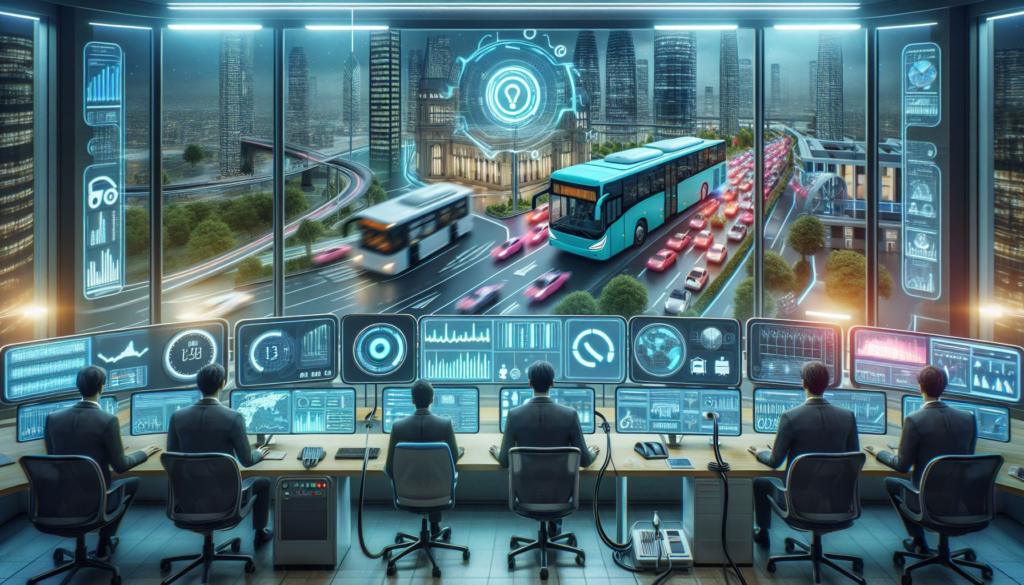As the world grapples with the growing threat of climate change, our cities, the hubs of human activity, are bearing the brunt of its impact. Extreme weather events, rising sea levels, and air pollution are increasingly jeopardizing urban life and its infrastructure. Yet, amidst this crisis, a wave of innovation is emerging from forward-thinking cities around the globe. These urban pioneers are embracing sustainable practices and reimagining transportation to build climate-smart, resilient communities.
Why Cities Need a Climate-Smart Makeover

Cities are major contributors to climate change, consuming vast amounts of energy and emitting a significant portion of global greenhouse gas emissions. Transportation, in particular, plays a major role in this environmental impact. Traffic congestion not only wastes time and fuel but also releases harmful pollutants into the air.
But the urgency to act goes beyond environmental concerns. Climate change-induced events like flooding and heatwaves can cripple transportation infrastructure, disrupt economies, and endanger lives. That’s why cities are increasingly recognizing the need to rethink their transportation systems and build resilience into their urban fabric.
Lessons from Nature: Biomimicry in Urban Design

One innovative approach gaining traction is biomimicry – the practice of learning from and mimicking nature’s designs to solve human problems. Nature has spent billions of years perfecting strategies for resilience and sustainability, and cities are beginning to tap into this wisdom.
For example, the intricate root systems of trees can inspire innovative stormwater management solutions, like Copenhagen’s bioswales. These planted drainage channels naturally filter rainwater, preventing flooding and replenishing groundwater.
Global Leaders in Sustainable Urban Transportation

Several cities have emerged as pioneers in the realm of climate-smart transportation, showcasing what’s possible when innovation and sustainability converge:
- Copenhagen: This Danish city has become a global leader in cycling infrastructure, with a network of dedicated bike lanes and bridges that prioritize safety and convenience. As a result, cycling accounts for a significant portion of daily commutes, reducing emissions and congestion.
- Stockholm’s Hammarby Sjöstad: This eco-district is a model for sustainable urban development, featuring energy-efficient buildings, renewable energy sources, and an integrated transportation system that encourages walking, cycling, and public transit use.
- Singapore: The city-state’s world-renowned public transportation system, combined with congestion pricing and smart traffic management technologies, has made car ownership less attractive and significantly reduced traffic congestion.
The Rise of Green Infrastructure

Green infrastructure, which utilizes natural elements like plants and soil to manage stormwater and reduce urban heat, is becoming a cornerstone of climate-smart transportation. Cities like Chicago have implemented green roofs on buildings and bus stops, which absorb rainwater, provide insulation, and reduce the urban heat island effect.
Technology’s Role in Climate-Smart Transportation
Smart city technologies are also playing a crucial role in transforming transportation. In Singapore, a sophisticated traffic management system uses real-time data to optimize traffic flow, reducing congestion and emissions. In London, the Oyster card system has revolutionized public transit, making it easier and more convenient for residents to use buses, trains, and trams.
A Community-Centered Approach
Climate-smart transportation isn’t just about technology and infrastructure; it’s about people. Successful initiatives prioritize community engagement, involving residents in the planning process to ensure that solutions meet their needs and address equity concerns.
Measuring Progress and Fostering a Culture of Improvement
To ensure continued progress, cities must establish clear metrics to track their performance and measure the impact of their initiatives. Key performance indicators (KPIs) like reduced emissions, improved air quality, and increased public transit ridership can help cities assess their success and identify areas for improvement.
Furthermore, fostering a culture of continuous improvement is essential. By embracing innovation, learning from successes and failures, and adapting to changing conditions, cities can continue to evolve their transportation systems to meet the challenges of a changing climate.
Looking Ahead: The Future of Urban Transportation

The transition to climate-smart transportation is well underway, and the cities leading this charge are paving the way for a more sustainable and resilient future. By prioritizing sustainability, embracing innovation, and engaging with their communities, these cities are creating models for others to follow.
Resources
Key Innovations:
- Smart Traffic Management Systems:
- Singapore’s Intelligent Transport System: https://cec-iitr.medium.com/singapores-transportation-system-4a414caf7b34
- London’s SCOOT system: https://www.london.gov.uk/who-we-are/what-london-assembly-does/questions-mayor/find-an-answer/scoot-traffic-control-system
- Electric Vehicles (EVs) and Charging Infrastructure:
- California’s Zero-Emission Vehicle program: https://ww2.arb.ca.gov/our-work/programs/zero-emission-vehicle-program
- Micromobility:
- Lime: https://www.li.me/
- Bird: https://www.bird.co/
- Spin: https://www.spin.app/
- MaaS (Mobility as a Service):
- Whim: [invalid URL removed]
- Moovit: https://moovitapp.com/
- Citymapper: https://citymapper.com/
Thought Space Leaders & Subject Matter Experts:
- Janette Sadik-Khan:
- Bloomberg Associates profile: https://associates.bloomberg.org/team/janette-sadik-khan/
- Twitter: @JSadikKhan
- Robin Chase:
- Website: https://www.robinchase.org/
- Twitter: @rmchase
- Carlo Ratti:
- MIT Senseable City Lab: https://senseable.mit.edu/
- Twitter: @carloratti
- Susan Zielinski:
- National Academies profile: https://www.linkedin.com/in/susanzielinskium/
- Brent Toderian:
- Website: https://toderianurbanworks.com/brent
- Twitter: @BrentToderian
Projects:
- The 15-Minute City:
- Superblocks in Barcelona:
- The Great Green Wall of Cities:
Policies:
- Congestion Pricing:
- Transport for London: https://tfl.gov.uk/modes/driving/congestion-charge
- Low-Emission Zones:
- Urban Access Regulations in Europe: https://urbanaccessregulations.eu/
Companies Making an Impact:
- BYD: https://en.byd.com/
- Tesla: https://www.tesla.com/
- Siemens Mobility: https://new.siemens.com/global/en/products/mobility.html
- AECOM: https://aecom.com/
- Sidewalk Labs: https://blog.google/outreach-initiatives/sustainability/how-sidewalk-labs-is-helping-make-cities-more-sustainable-in-2022/
